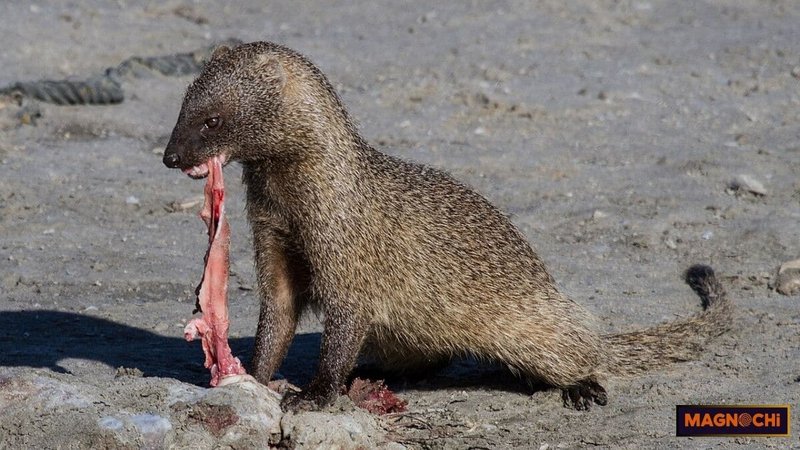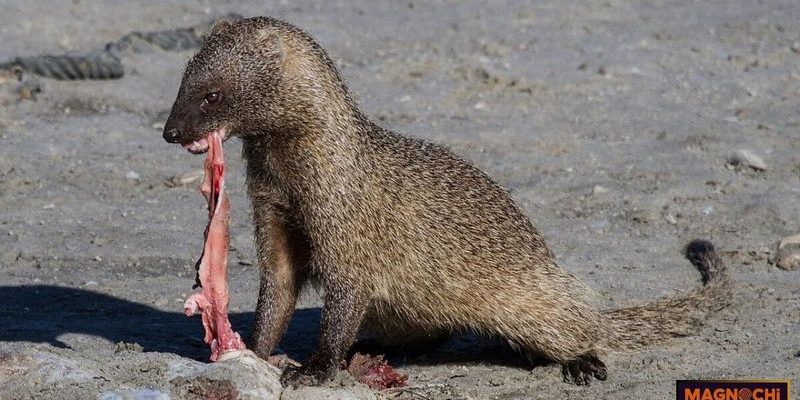
Imagine a cute little animal that looks innocent but holds a powerful secret. That’s the mongoose for you! While most of us are unlikely to encounter one in our daily lives, these creatures do have a fascinating place in the wild. They’re skilled hunters and are known for their agility and cleverness. But with this power comes the question: could they ever be dangerous to us? Throughout this article, we’ll explore the nature of mongooses, their behaviors, and whether they might ever cross that line from harmless to hazardous.
Understanding the Mongoose: A Quick Overview
Mongooses belong to the family Herpestidae, and there are about 34 species of them scattered across Africa, Asia, and parts of Europe. These creatures are generally small, with most species measuring around one to two feet long. Their long, slender bodies and short legs make them quite agile and quick on their feet. When they’re not busy hunting for insects, small mammals, or reptiles, you’ll often find them living in social groups or family units.
One of the most fascinating aspects of mongooses is their social behavior. Some species, like the meerkat, have complex social systems where they work together to raise young and keep watch for predators. This teamwork spirit, while impressive, isn’t usually a sign that they’re dangerous. Instead, it simply highlights their intelligence and adaptability.
You might also be surprised to learn that mongooses play a key role in their ecosystems. As predators, they help control populations of pests, like rats and insects, contributing to ecological balance. Yet, their predatory nature leads to some interesting questions about their interactions with humans.
Do Mongooses Attack Humans?
While mongooses are primarily carnivorous and often hunt smaller prey, they’re not known to actively seek out or attack humans. However, like many wild animals, they can become defensive if they feel threatened. If a mongoose feels cornered or is protecting its young, it may show aggression. But let’s be clear: this is rare. In most cases, they’d rather flee than fight.
It’s essential to understand that familiarity with these animals often leads to safety. If you’re in a region where mongooses are common, maintaining a respectful distance will typically keep any potential interactions friendly. If a mongoose is not used to human presence, it may behave unpredictably, as many wild animals do.
There have been rare instances where mongooses have bitten humans, usually when they feel provoked or are defending themselves. But, again, this is not a common occurrence. In fact, they would much prefer to scurry away into a bush than engage in a confrontation.
The Myth of the Rabid Mongoose
One popular myth that circulates about mongooses involves rabies. In some regions, they are known carriers of the rabies virus, but how often do they actually transmit it to humans? Honestly, rabies cases among mongooses are quite rare, and even rarer are the instances where human infections occur. Most mongooses live in the wild where their encounters with humans are minimal, reducing the chance of spreading rabies significantly.
That said, rabies is a serious disease, and if a mongoose bites you or you encounter one that appears sick or aggressive, it’s essential to seek medical attention immediately. It’s important not to underestimate any wild animal that behaves abnormally.
If you’re ever close to wildlife, keeping an eye out for warning signs can be helpful. Look for:
- Unusual behavior, like disorientation or aggression
- Signs of illness, such as staggering or drooling
- Groups of mongooses gathering in unusual locations
Taking precautions is always smarter than ignoring potential risks.
Protecting Yourself Around Mongooses
If you’re living in or visiting areas where mongooses are known to roam, here’s how to safeguard yourself:
- Stay Calm: If you spot a mongoose, don’t panic. Just observe from a distance.
- Avoid Feeding: Don’t try to attract them with food. This can lead to them losing their natural fear of humans.
- Keep Your Distance: Allow them their space. Remember, they’re more frightened of you than you are of them!
By respecting their territory and behavior, you can enjoy the excitement of observing mongooses without putting yourself at risk.
Ecological Impact and Conservation
Beyond their interactions with humans, mongooses play a vital role in controlling pest populations in their ecosystems. They keep insect and rodent numbers in check, acting as natural pest control agents. This is essential for agricultural regions, where a healthy balance can help ensure crop production.
Conservation efforts for mongooses focus on protecting their habitats and ensuring that they can thrive naturally in the wild. This not only benefits mongooses but also helps maintain the ecological balance in the areas where they reside. Understanding the importance of these creatures can foster greater respect and appreciation for wildlife as a whole.
But be aware: in some places, mongooses have been introduced as a method of pest control, often leading to significant ecological issues. They can become invasive, outcompeting native species and disrupting local ecosystems. This underscores the need for thoughtful management and education around wildlife.
When it comes to the question of whether mongooses can be dangerous to humans, the answer is mostly no. While they can defend themselves if threatened, their typical behavior leans more toward avoidance than aggression. Understanding their nature helps us appreciate these creatures without fear.
So, the next time you hear about mongooses, remember their role in nature and that, while they can bite if provoked, they are primarily harmless. Keep your distance, observe with curiosity, and enjoy the wonder of these fascinating little animals. In the end, a little knowledge about wildlife can go a long way in fostering peaceful coexistence.

